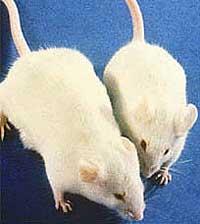Towards clarification of the mechanisms driven by Pheromone
The collaboration between the universities of Switzerland, Lausanne and Geneva has allowed to identify a family of genes and one of them that encodes pheromone receptors in rats.
The path traveled to achieve this result has been long. Earlier this year, they discovered and decoded the family of the 150 genes encoding pheromone receptors. All these genes are expressed only in the neurons that form the bomeronasal organ. The bomeronasal organ is a unique organ of rats whose neuronal network is responsible for detecting pheromones and sending the signal to the brain. Control of the sexual desire of the rat, aggression and stress depends on these neurons.

Other later studies showed that genes, in addition to encoding pheromone receptors, fulfilled other functions. This raised doubts among the researchers and showed the need for more trials.
In the aforementioned Swiss universities, another method was used to clarify the function of the genes. The choice of the V1rb2 gene of this family of genes and the growth of rat neurons with the modified gene, emitted fluorescence every time the gene was activated. Therefore, the more activity the gene had, the more light emitted the cell.
20 different pheromones observed the reaction of neurons. They saw that the V1rb2 gene had the highest activity with a pheromone that appears in the urine of rats. The genderless neurons V1rb2 did not emit any light. Therefore, they showed that the proteins that encode these genes are receptors of pheromones.
Now what needs to be clarified is to know which brain processes activate the signals that pheromone receptors send to the brain and which are those that adapt the behavior of the rat.
Buletina
Bidali zure helbide elektronikoa eta jaso asteroko buletina zure sarrera-ontzian











